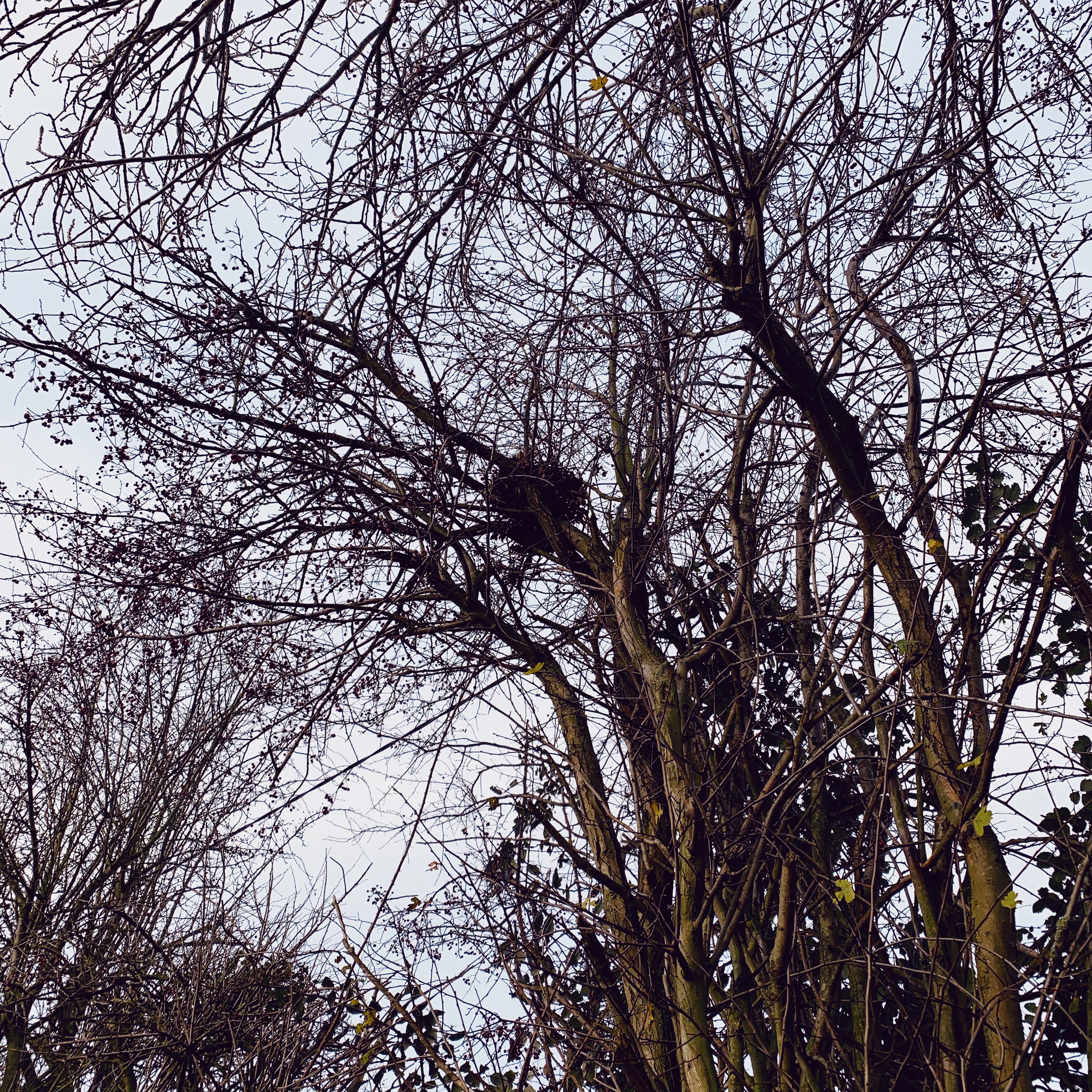Once, on a cold winter’s morning, in a half-empty train heading east, you peer through the grime and frost cracked window. A slope of field blurs into fog and then, as the train slows, a small, dilapidated lineside hut creeps through the mire then withers, like a ghost, back into the past. Was it ever there? Or did you imagine the carious window-frame, a few shards of glass enduring like shattered teeth, the cracked, lichened walls, flat roof and chimney stump? How, on all those journeys down this desolate, fen-bound line, did you never see it? Or, maybe, like a latter-day Watson, you saw but failed to observe.
Perhaps then you slip through the years to imagine three men — railway platelayers —walking through the same bleak December roke, hands like frozen clods of earth, backs sore and bent. For them, the hut, now restored to its simple and austere glory, bestows warmth, safety and conviviality. The stove lit, a kettle boiling, the fug of damp clothes and tobacco smoke. A place of conversation and companionship, and of stories I suspect, no doubt some as long as the rails that stretch to east and west. Tales of tracks repaired, a signalman’s mistake and the inevitable railway hauntings.
And, of course, this platelayers’ hut occupies a liminal space. It stands ‘off the geographic grid’, squatly alone on the border between rail and field. This hut is on the line, an edgeland structure that is strangely both visible and invisible. A mundane, graffitied ruin that elicits rarely a first glance, let alone a second.
This liminal place is one of withdrawal and seclusion yet also one of comfort and security. As such, it evokes Gaston Bachelard’s image of the nest. He writes of the well-being felt when seated in front of the fire while bad weather rages outside. This is the primitiveness of the refuge, where the creature ‘huddles up to itself, takes to cover, hides away, lies snug, concealed’ (Bachelard, 1958:112).
In my research on the spaces where organisational stories are told, certain sites — pubs, toilets, a street corner, an enclosed booth in a staff café — drew similar words of description. Participants spoke of them as ‘safe’, a ‘haven’, ‘enclosed’, ‘private’. These are the platelayers’ huts rebooted for a modern age.
And one other space was also chosen — that of the home office. Here stories were consumed and exchanged via phone, instant message and videoconference. Yet the office itself was described as a ‘safe shut away hole’ — somewhere ‘tucked away’ where one participant ‘longed to be’. Like the nest, these home offices, are infused with the domestic and the familial. They are refuges of concealment and security.
Yet, there is a shadow. Bachelard identifies a paradox: a nest ‘is a precarious thing, and yet it sets us to daydreaming of security’ (Bachelard, 1958: 122). This unsettling fragility is reflected by Edward Thomas who writes of the ‘summer nests uncovered by autumn wind, /some torn, others dislodged, all dark’. These nests ominously ‘hang like a mark’ (Thomas: 43)
And perhaps this ‘mark’ prefigures our own experience over the past year. For some, homeworking has seen the nest invaded, its sanctuary compromised. Harriet Shortt and Michael Izak write of the ‘contested home’ — a space, previously hidden except to those we invite in, but now exposed to the unwelcome Zoom gaze of many. And those ‘guests’ may include those we would not normally beckon across the threshold, indeed some we may actively dislike (Shortt and Izak, 2020: 45).
This unease may also arise from the very betwixt and between nature of the videoconference. We occupy two spaces simultaneously. We are both in the nest and outside it. One is a lived space of memory and narrative. It is also a material space of physical sensation — the feel of a chair against the back, the sound of a passing car, the smell of bacon cooking from the kitchen downstairs.
The other is a virtual space where senses are peculiarly compromised. The border controls of this territory demand we leave touch and smell behind while sight and sound are eerily degraded. Here we perceive fuzzy, corroded images of disembodied heads and shoulders as incorporeal as colleagues glimpsed through a Victorian, London pea-souper. Meanwhile, voices are randomly subjected to echo, reverb and delay as if this in a land governed by an erratic, and occasionally malignant, sound engineer.
Ares Kalandides suggests that virtual space is not a place, in the sense of a meaningful location. In engenders no sense of place and, consequently, drains emotions — not through consumption but numbness (Kalandides, 2020). In this world, we have no memory, no associations. We are insensate.
And yet…Maybe there is a way to merge these two worlds. Some have embraced the idea of the ‘silent meeting’. Having invited a colleague to a videoconference you then work silently together — as if your homes have been conjoined in this third, virtual space. Apart but together. And like the platelayers, warm and secure in their lineside hut, you and your colleague can, in your silent meeting, enjoy companionship while seeking shelter from the metaphoric storms that rage without. A virtual nest spun from intention and desire, yet still, maybe, one that protects and sustains.



Bachelard, G. (2014[1958]) The poetics of space. Penguin.
Kalandides, A. (2020) ‘Online meetings: a global sense of ‘virtual place?’, Institute of Place Management (IPM) Blog, September 16. Available at: http://blog.placemanagement.org/2020/09/16/online-meetings-a-global-sense-of-virtual-place/ (Accessed, 5 December 2020).
Shortt, H. and Izak, M. (2020) ‘The contested home’, in Parker, M. ed. Life after Covid-19: the other side of the crisis. Bristol University Press.
Thomas, E. (2008) The annotated collected poems. Bloodaxe.
 Strolling along the well-tended gravel paths or clambering over crumbling, bindweed ensnared masonry, we can easily slip between multiple worlds. In their considered and sensitive study of roadside memorials, Clark and Franzmann note how these sites challenge ideas about what is public/private or secular/sacred space: they blur the ‘somewhere that is nowhere in particular rather than a special place, and something that is passed by rather than permanently set aside as a place of pilgrimage’ (p.586). As we stroll or clamber, are we visitor, pilgrim, the transitory or the purposeful?
Strolling along the well-tended gravel paths or clambering over crumbling, bindweed ensnared masonry, we can easily slip between multiple worlds. In their considered and sensitive study of roadside memorials, Clark and Franzmann note how these sites challenge ideas about what is public/private or secular/sacred space: they blur the ‘somewhere that is nowhere in particular rather than a special place, and something that is passed by rather than permanently set aside as a place of pilgrimage’ (p.586). As we stroll or clamber, are we visitor, pilgrim, the transitory or the purposeful? For Foucault, the cemetery is an example of a heterotopia: sites which ‘mirror and at the same time distort, unsettle or invert other spaces’ (Johnson, 2013, p.790-791). It is a place ‘unlike other cultural spaces’ (Foucault, p.4) yet which is connected with all sites as ‘each individual each family has relatives in the cemetery’. As Johnson notes, cemeteries incorporate many of the characteristics of heterotopias that Foucault identified. They are ‘privileged or sacred’ sites reserved for a critical rite of passage; they ‘contain multiple meanings; and they are both utterly mundane and extraordinary’ (Johnson, 2013, p.799). Intriguingly, they also begin ‘to function at full capacity when men arrive at a sort of absolute break with their traditional time’ (Foucault, p.6). The graveyard elides ‘slices of time’ since ‘the dead are outside of time, relegated to what Foucault terms a quasi éternité‘ (Gandy, p.733).
For Foucault, the cemetery is an example of a heterotopia: sites which ‘mirror and at the same time distort, unsettle or invert other spaces’ (Johnson, 2013, p.790-791). It is a place ‘unlike other cultural spaces’ (Foucault, p.4) yet which is connected with all sites as ‘each individual each family has relatives in the cemetery’. As Johnson notes, cemeteries incorporate many of the characteristics of heterotopias that Foucault identified. They are ‘privileged or sacred’ sites reserved for a critical rite of passage; they ‘contain multiple meanings; and they are both utterly mundane and extraordinary’ (Johnson, 2013, p.799). Intriguingly, they also begin ‘to function at full capacity when men arrive at a sort of absolute break with their traditional time’ (Foucault, p.6). The graveyard elides ‘slices of time’ since ‘the dead are outside of time, relegated to what Foucault terms a quasi éternité‘ (Gandy, p.733). So before we leave our graveyard, let us take a final look around. We may see toys, flowers, photographs, candles and other personal artefacts placed carefully around the graves. They reassure the absent (and, of course, those that remain) and ‘link the tangible present to an intangible past (and future) of imaginary times and spaces’ (Clements, p.476). They also invite stories; and, with the epitaphs and inscriptions, offer clues and plot-lines that we craft into narratives breathing life into those that lie beneath us.
So before we leave our graveyard, let us take a final look around. We may see toys, flowers, photographs, candles and other personal artefacts placed carefully around the graves. They reassure the absent (and, of course, those that remain) and ‘link the tangible present to an intangible past (and future) of imaginary times and spaces’ (Clements, p.476). They also invite stories; and, with the epitaphs and inscriptions, offer clues and plot-lines that we craft into narratives breathing life into those that lie beneath us. Our signalling is successful. A black London cab executes a perfect U-turn – a masterclass in precision and confidence – that attracts notice and does little to sate our desire for anonymity. We state our destination, open the door and step inside.
Our signalling is successful. A black London cab executes a perfect U-turn – a masterclass in precision and confidence – that attracts notice and does little to sate our desire for anonymity. We state our destination, open the door and step inside. We also progress in time, a movement governed by – or more accurately suggested by – timetables and schedules. Before 1840, such definitions of time were also inherently fluid. A journey was not just through time but between time with different towns deploying local systems of time. For the Victorians however, the modern railway carriage was, as John Bailey intriguingly explores, liminal in many other ways. If we peek through the smoke-smudged windows, we might discern a place of adventure, blurred identities, erotic escapade and transgression.
We also progress in time, a movement governed by – or more accurately suggested by – timetables and schedules. Before 1840, such definitions of time were also inherently fluid. A journey was not just through time but between time with different towns deploying local systems of time. For the Victorians however, the modern railway carriage was, as John Bailey intriguingly explores, liminal in many other ways. If we peek through the smoke-smudged windows, we might discern a place of adventure, blurred identities, erotic escapade and transgression.